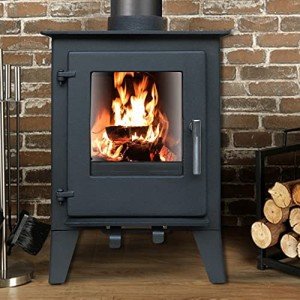The Versatility and Appeal of Modern Multi-Fuel Stoves
In the realm of heating solutions for homes, the modern multi-fuel stove stands apart as an innovative and useful choice. Combining performance, adaptability, and aesthetic charm, these stoves have acquired extensive appeal among homeowners seeking to boost their home. This article looks into the functions and advantages of modern multi-fuel stoves, supplies insights on their performance, and addresses typical questions regarding their usage and upkeep.
What is a Multi-Fuel Stove?
A multi-fuel stove is developed to burn various kinds of strong fuels effectively. These can consist of skilled wood, coal, peat, and other biomass products. related resource site to make use of numerous fuel types makes it an appealing choice for those seeking flexibility in their heating techniques, specifically in regions where fuel accessibility varies.
Benefits of Multi-Fuel Stoves
The advantages of modern multi-fuel stoves extend beyond their adaptability. Here are some key advantages:
| Benefit | Description |
|---|---|
| Flexibility | Capable of burning various fuels depending on accessibility. |
| Cost-Effectiveness | Possible for lower heating expenses due to fuel choices. |
| Environmentally Friendly | Wood and biomass fuels can have a lower carbon footprint. |
| Effective Heating | Advanced combustion technology enhances heat output. |
| Aesthetic Appeal | Offered in different styles to complement home decor. |
Features of Modern Multi-Fuel Stoves
Modern multi-fuel stoves are designed with user benefit and efficiency in mind. Some features commonly discovered in contemporary designs include:
- Airflow Control: Adjustable air controls permit users to manage combustion and heat output effectively.
- Secondary Combustion Systems: These systems help burn off unspent fuel, improving effectiveness and reducing emissions.
- Glass Door Panes: Many stoves include large glass doors for visibility and atmosphere while maintaining heat.
- Integrated Ash Pan: Facilitates simple cleanup and upkeep after usage.
- Flue and Chimney Options: Compatibility with various flue types enhances setup versatility.
Selecting the Right Multi-Fuel Stove
When considering a multi-fuel stove, several elements ought to influence the decision-making procedure. Here are a few essential factors to consider:
- Size and Capacity: Assess the area to be heated up and select a stove that satisfies those requirements.
- Fuel Types: Check which fuels are easily offered and evaluate the stove's compatibility with those fuels.
- Efficiency Ratings: Review the stove's efficiency rating and emissions to identify its ecological effect and heating potential.
- Design and Aesthetics: Choose a style that will fit your home's design and individual taste.
- Setup Requirements: Consider the area needed for setup, consisting of flue systems and clearances.
Installation and Maintenance of Multi-Fuel Stoves
Correct setup and maintenance are vital for the safe and effective operation of multi-fuel stoves. Here's an overview of the installation procedure and necessary upkeep practices:
Installation Process
- Select a Location: Identify a suitable spot that allows for sufficient air flow and heat distribution.
- Install the Foundation: Ensure the stove is on a non-combustible surface, such as brick or stone.
- Set Up the Flue and Chimney: Follow local building regulations for flue setup and chimney height.
- Link to Fuel Source: Ensure safe connection and clearance from any combustible materials.
- Final Checks: Conduct extensive checks to ensure whatever is securely attached and operating properly.
Upkeep Practices
- Regular Cleaning: Clean out ash and debris after each usage to preserve airflow and performance.
- Chimney Inspection: Have the chimney examined every year to prevent creosote buildup, which can result in fires.
- Check Seals and Gaskets: Ensure that the seals and gaskets stay undamaged to improve efficiency and avoid heat loss.
- Fuel Quality: Use dry, skilled wood or quality coal to reduce residue accumulation and boost performance.
FAQs About Multi-Fuel Stoves
Can I utilize different types of fuels at the same time?
- No, it's recommended to use one kind of fuel at a time to enhance combustion effectiveness.
Are modern multi-fuel stoves ecologically friendly?
- Yes, they can be more environmentally friendly than traditional heating systems, particularly if utilizing sustainable fuels like wood or biomass.
How much does it cost to run a multi-fuel stove?
- Running expenses depend on fuel prices, use frequency, and stove efficiency. Assessing local fuel expenses will provide a clearer image.
Do I need a special setup for a multi-fuel stove?
- Yes, setup requirements might vary; it's a good idea to consult an expert installer to ensure compliance with local codes.
Can multi-fuel stoves be used for cooking?
- Yes, some models can be used for cooking, but it's necessary to inspect manufacturer specifications for cooking abilities.
In conclusion, modern multi-fuel stoves provide a trusted, efficient, and aesthetically pleasing option for heating homes. Their flexibility to numerous fuel types not only improves versatility however can likewise lead to cost savings and a decreased environmental footprint. By understanding their functions, setup requirements, and maintenance requirements, homeowners can make educated choices about incorporating these versatile heating services into their living areas.
With the increasing relocation towards sustainable living, modern multi-fuel stoves are poised to stay an important element of home heater for several years to come.

